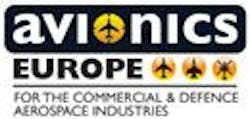Airbus, Inmarsat, Nokia Siemens, United Airlines highlight avionics communications standards at Avionics Europe conference
MUNICH, 21 March 2012. Executives from Airbus, Inmarsat, Nokia Siemens, EADS Innovations Works, and Esterel Technologies highlighted, during the Avionics Europe 2012 conference program in Munich, the importance of fast and reliable voice and data communications to the efficient management of global air traffic.
4D technology is the future of air traffic management (ATM). Fabienne Sauron-Combie, Airbus EYAC, described the goal of Initial-4D in ATM: "At the end of the cruise phase, the flight crew exchanges data link messages with air traffic control (ATC) to agree on a time constraint at the approach metering fix (MF). ATC will then let the aircraft manage this constraint and fly its optimum profile up to that point." To this end, Airbus is working on the Airbus FANS A+C avionics product. A product feasibility study is currently in progress. Certification is anticipated between 2016 and 2018.
"Aerospace is a fast-growing market segment," says Dale Irish, a business development executive at Inmarsat in the U.K. Future Air Navigation System (FANS) aviation data link usage has grown consistently by more than 8 percent over each of the past five years. Data link helps reduce controller workload (capacity gain) and reduce communications errors (safety gain). Data link has been largely confirmed to oceanic services, but Europe is adopting for continental services.
| Related stories -- Avionics Europe 2012 opens doors -- Avionics Europe Show Daily, brought to you by Avionics Intelligence -- Atego launches Atego Process Director for DO-178 at Avionics Europe. |
ATM modernization is being driven by SESAR in Europe and NextGen in the U.S. Both are based on 4D trajectory management supported by common information exchange via System Wide Information Management (SWIM), Irish explains. He stresses the importance of multi-layer protection, including: priority management, data encryption, and a secured architecture. "Aero SatCom (satellite communications) is a key enabler of future concepts in both oceanic and continental airspace."
Pedro Schmid, head of business development at Nokia Siemens Network in Germany, discussed how broadband mobile, specifically LTE (Long Term Evolution), could fit in single-sky avionics. "LTE allows for the efficient use of the spectrum, as well as low frequencies for large coverage and capacity," he says.
Captain Joe Burns, managing director of flight operations technology and flight test at United Airlines in the U.S., recognized the importance of data communications (DataComm) and enabling avionics. "Broadband communications is really growing rapidly. We're already estimating broadband will carry 85 percent of our traffic. We expect expansive growth in that area," he says. The United Airlines fleet takes advantage of broadband, Iridium, VDL2, and FANS 1/A or 1/A+ for data communications. The airline is also in the process of rolling out Apple iPad portable tablet computers, using the WSI platform, to all of its pilots.
The Avionics Europe 2012 conference takes place on Wednesday and Thursday this week. Follow continuing news coverage from the show on the Avionics Intelligence Website at www.avionics-intelligence.com/avionics-europe.
Follow Military & Aerospace Electronics and Avionics Intelligence news updates on Twitter
